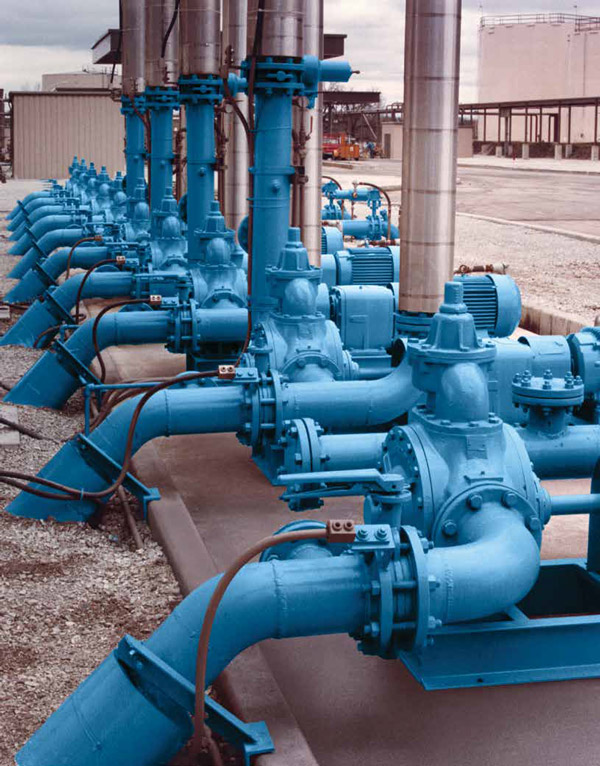The worldwide abundance of shale oil and natural gas has changed the face of global refined fuels production, and MENA countries stand ready to play an important role.
While many see shale production as a U.S.-only phenomenon, substantial shale deposits dot the globe with many countries and oil companies poised to potentially capitalize on this niche in oil-and-gas production dynamics. According to the U.S. Energy Information Administration (EIA), the North African nation of Algeria has the world’s third-largest shale gas reserves—707 trillion cubic feet—trailing only China and Argentina. Libya has the fifth-most shale oil reserves with 26 billion barrels, behind only Russia, the U.S., China
and Argentina.
Experts interviewed by the Middle East Energy Survey predict that the world may require between 40 million and 55 million barrels per day of “new oil” by 2030. The shale deposits in Algeria and Libya, and other MENA countries like Morocco, Tunisia and Egypt could play a leading role in meeting those future demands.

Image 1. There are many entry points within the shale oil production and supply chain where sliding vane pump technology can help optimize operations.
(Images courtesy of Blackmer)
A Different View
The ultimate goal of oilfield drilling and recovery activities is to quickly and cost-effectively turn oil and natural gas into marketable refined fuels and other petroleum-based commodities. These fuels and commodities include gasoline, diesel, liquefied petroleum gas (LPG), kerosene, home heating oil, bunkering fuels, jet fuels and asphalt/bitumen.
The process of turning shale oil into end products is different than the one required for traditional crude oil. Crude oil found in the prolific oilfields of Saudi Arabia, Norway and the Gulf of Mexico, for example, and produced through long-held methods is known as “heavy” or “dirty.” This means it has a higher viscosity, specific gravity and molecular composition, all of which combine to make it dense, or much thicker than water. Heavy crude oil also has a sulfur content that is higher than 1 percent and contains aromatics, asphaltenes and other impurities.
Oil that is produced from shale formations, on the other hand, is shown to have different chemical and physical properties than traditional crude oil. “Clean” shale oil is much lighter than “dirty” crude oil because of its lower viscosity and level of impurities, which means that it requires less processing during refining.
Because of its composition, therefore, shale oil has different handling characteristics than traditional crude oil as it makes its way through the refining process. This requires modifications in the actual refining process and in the choice of pumping equipment that is used. This equipment serves many purposes, such as moving raw shale oil from storage into the refinery and, ultimately, transferring finished refined products to storage tanks and transport vehicles.
Sliding Vane Advantages
For more than a century, sliding vane pump technology has provided reliable performance in a myriad of refined fuels transfer operations. The secret to the sliding vane pump’s repeated success is found in its unique design and method of operation.
Sliding vane pumps have a number of vanes that are free to slide into or out of slots in the pump rotor. When the pump driver turns the rotor, a combination of forces (centrifugal, mechanical push rods and liquid) causes the vanes to move outward in their slots and around the inner bore of the pump casing. This forms internal pumping chambers. As the rotor revolves, the fluid flows through the suction port and into the pumping chambers created by the vanes. The fluid is then transported around the pump casing until reaching the discharge port, at which point the fluid moves into the discharge piping.
This design enables the sliding vane pump to deliver operational characteristics necessary for effective fluid transfer in oilfield production and supply, as well as refined fuels transfer applications. Specifically, those characteristics are:
- high suction capability
- line stripping
- dry-run capability
- self-priming operation
- volumetric consistency
- non-slip operation
- non-galling
- superior product sealing
- high or low flow rates
- easy maintenance
- stationary, skid or truck mounting
- stainless-steel, ductile-iron or cast-iron construction
These operational characteristics help make sliding vane pumps a better choice than, for example, gear pumps. Gear pumps may not be reliable when used with shale oil or many refined fuels because their mode of operation does not allow them to effectively handle low-viscosity fluids.
Additionally, as gear pumps wear, their internal clearances increase, which is a constant concern when transferring thin liquids. The increase in internal clearances also requires more energy to operate the pump, resulting in lower energy efficiency.
Conclusion
The emergence of shale oil as a viable feedstock for refined fuels has created new or enhanced global markets and necessitated a re-evaluation of the best way to process and handle both shale oil and refined fuel products.
The sliding vane pump has proven for decades to be a reliable choice when handling refined fuels. More recently, the technology has been shown to be an excellent choice for shale oil, which has a unique formulation that fits well with all of the sweet spots in a sliding vane pump’s operational window.
About the Author
Thomas L. Stone is the PSG director of marketing for Blackmer. He may be reached at tom.stone@psgdover.com or +1-616-248- 9252. For more information on Blackmer’s full line of pumps and compressors, visit www.blackmer.com.